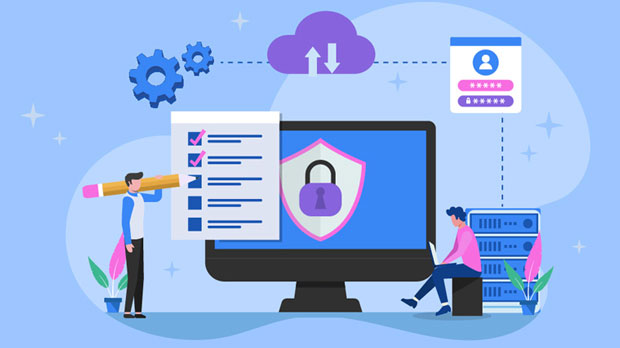socks5 proxy servers are an increasingly popular choice for users seeking enhanced privacy, security, and speed, especially for activities like streaming and online gaming. Unlike traditional VPNs, socks5 proxies offer a lightweight, low-latency solution that doesn’t interfere with the speed of data transfer, making them ideal for bandwidth-intensive tasks. When used correctly, SOCKS5 proxies can bypass geographical restrictions, prevent throttling, and enhance overall performance in streaming services and online gaming. This article will delve into what makes SOCKS5 proxies effective for these purposes, focusing on their benefits, how to choose the right one, and considerations for free services that are both fast and reliable. Understanding SOCKS5 Proxy Protocol: The BasicsBefore diving into how SOCKS5 proxies work for streaming and gaming, it’s important to understand what the SOCKS5 protocol entails. SOCKS (Socket Secure) is a protocol used to route network traffic between a client and a server through a proxy server. SOCKS5 is the latest and most advanced version, offering several improvements over its predecessors, including better security and support for different types of traffic.SOCKS5 proxies do not alter or inspect the data packets traveling between the client and the destination server, allowing them to maintain a high speed and low latency. Unlike HTTP proxies, which are designed primarily for web traffic, SOCKS5 supports a variety of protocols, including FTP, HTTP, and others, making it a versatile choice for different online activities, including streaming and gaming.Why SOCKS5 is Ideal for Streaming and GamingThe suitability of SOCKS5 proxies for streaming and gaming comes from several key advantages that this protocol offers:1. Low Latency and High Speed One of the most crucial factors in online gaming and streaming is speed. SOCKS5 proxies have a reputation for being fast and efficient, providing low latency which is essential for smooth gaming experiences and uninterrupted streaming. When using a SOCKS5 proxy, the data travels directly through the proxy without unnecessary encryption or decryption, making it less likely to cause buffering or delays.2. Enhanced Privacy and Security While SOCKS5 proxies do not encrypt your data, they provide a secure tunnel for your connection, hiding your real IP address from third-party websites and services. This level of anonymity can be important for users who want to access geo-restricted content or avoid throttling by ISPs during peak hours.3. Bypassing Geographical Restrictions For streaming services, geo-restrictions are a common issue. Many platforms restrict access to content based on the user’s location, often blocking access from certain countries. With a SOCKS5 proxy, users can mask their IP addresses and appear as if they are located in a different region, thus bypassing these restrictions. This is especially useful for gamers who wish to access region-locked servers or users who want to watch international content.4. Lower Risk of Throttling Internet Service Providers (ISPs) sometimes throttle bandwidth for specific services, particularly streaming or gaming, to manage network load. SOCKS5 proxies can help avoid this issue by masking the traffic type, making it more difficult for ISPs to detect and throttle bandwidth based on usage patterns.Free SOCKS5 Proxies: How to Find a Reliable ServiceWhile many SOCKS5 proxies require a paid subscription, free SOCKS5 proxies can also be effective for streaming and gaming, as long as users are cautious and aware of certain limitations. Free proxies typically come with certain trade-offs, such as lower reliability, slower speeds, or fewer server locations. Nevertheless, there are free SOCKS5 proxies that provide decent performance, especially for those who want to test the waters before committing to a premium service.When choosing a free socks5 proxy for streaming or gaming, consider the following factors:1. Speed and Reliability Free proxies may suffer from congestion due to high demand, leading to slower speeds or instability. It is important to test the proxy before relying on it for a high-performance activity like gaming or streaming. Some free services may have strict bandwidth limitations or time restrictions that could interfere with your experience.2. Server Locations A key factor in accessing geo-restricted content is the location of the proxy server. Free SOCKS5 proxies typically offer fewer server locations, which might limit your ability to access content from specific countries. However, if the service provides servers in the regions you need, it can still be a viable option.3. Security Concerns Free proxy services are more likely to compromise on security. While SOCKS5 itself does not encrypt your traffic, some free proxy services may expose you to risks such as data interception or malicious ads. Ensure the free service you use does not log or track your activities.4. Compatibility with Devices and Platforms Not all SOCKS5 proxies work seamlessly with all streaming platforms or gaming applications. Some may require additional configuration, especially on devices like consoles or smart TVs. Before committing to a free proxy service, ensure it is compatible with the devices and services you use for streaming or gaming.Setting Up a SOCKS5 Proxy for Streaming and GamingSetting up a SOCKS5 proxy for streaming or gaming is relatively straightforward, but the process can vary depending on the platform or device you're using. Here’s a general guide to get started:1. Install the Proxy Client or Configure Manually Some streaming platforms or games allow direct proxy configuration within the application. Alternatively, you can configure a SOCKS5 proxy within your system settings or use a third-party application. For example, most operating systems (Windows, macOS) support SOCKS5 proxy settings in the network configuration section. 2. Enter the Proxy Server Details Once you've selected a proxy provider (whether free or paid), you will need to enter the server’s IP address and port number in the relevant settings section. Ensure that the proxy supports the SOCKS5 protocol for optimal performance.3. Test the Connection After setting up the proxy, it’s crucial to test the connection before using it for intensive tasks. You can do this by visiting websites or launching games to ensure that everything is working smoothly and that your internet speed is adequate for streaming or gaming.Limitations of Free SOCKS5 ProxiesWhile free SOCKS5 proxies can provide an excellent solution for occasional streaming or gaming, they are not without limitations. Some of the most common drawbacks include:1. Limited Bandwidth and Speed Free proxies often suffer from bandwidth restrictions that can result in slow speeds, making them less suitable for high-bandwidth activities like 4K streaming or multiplayer gaming. In some cases, users may experience frequent disconnections or lag.2. Risk of Malicious Behavior Free proxy services may be operated by malicious actors who could steal your data or inject malware. Always ensure the proxy service you choose has a good reputation and does not log or misuse your personal data.3. Lack of Customer Support Free proxy services often lack proper customer support, meaning that if issues arise, you may not have access to assistance. This can be especially frustrating for users who rely on proxies for gaming, where real-time troubleshooting is necessary.Conclusion: Are Free SOCKS5 Proxies Worth It for Streaming and Gaming?Free and fast SOCKS5 proxies can be an excellent choice for users who want to enhance their streaming and gaming experience without breaking the bank. While they offer many advantages such as lower latency, improved privacy, and the ability to bypass geo-restrictions, they also come with limitations that users must be aware of. For occasional users, free SOCKS5 proxies may suffice, but for consistent, high-quality performance, a paid service is often more reliable. If you choose a free service, ensure it meets your needs in terms of speed, security, and server locations. Ultimately, the right SOCKS5 proxy can make a significant difference in improving your online entertainment experience.
Jan 07, 2025
![arrow]()




























































